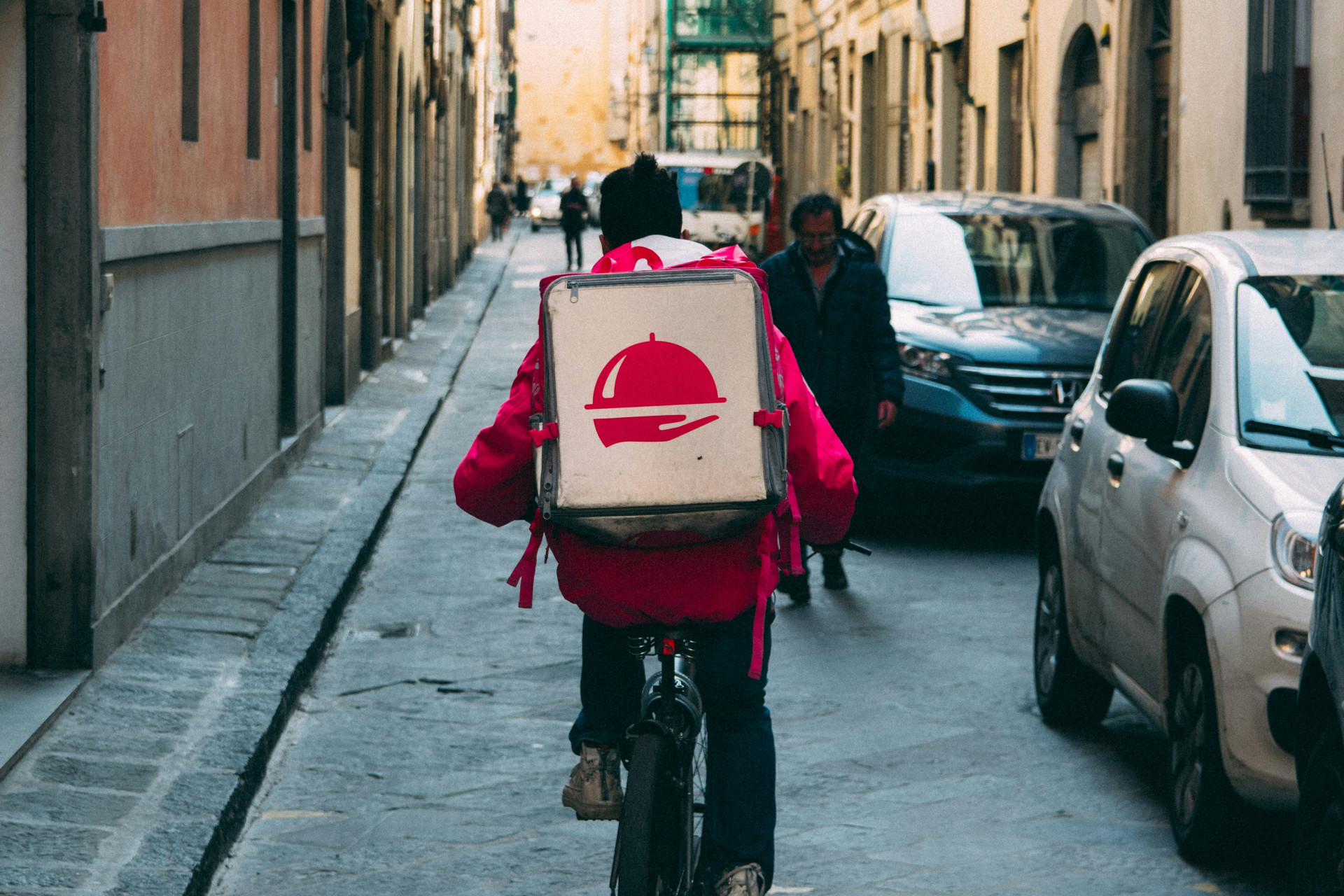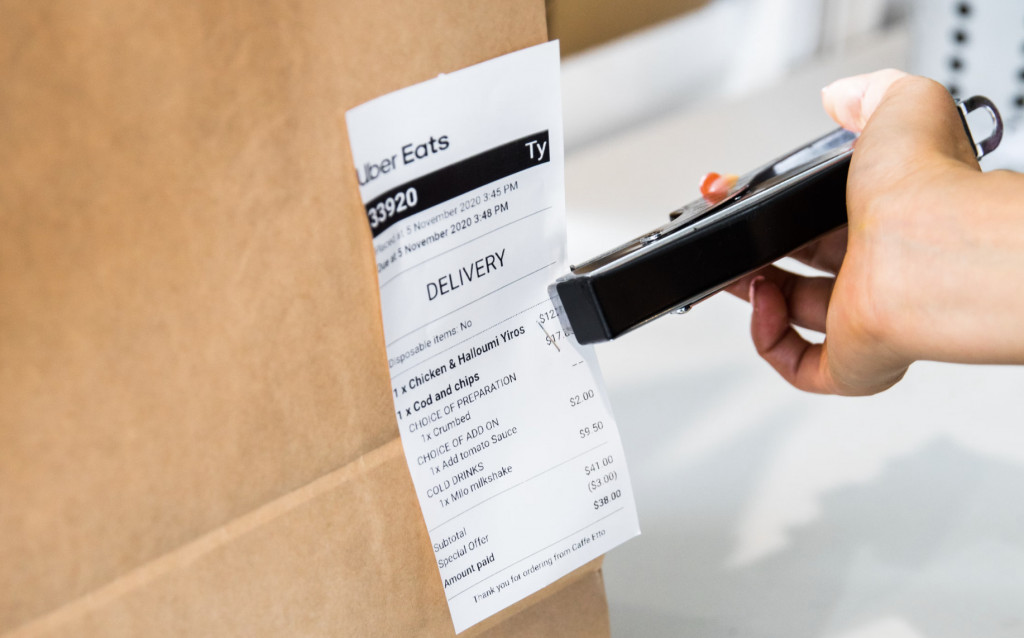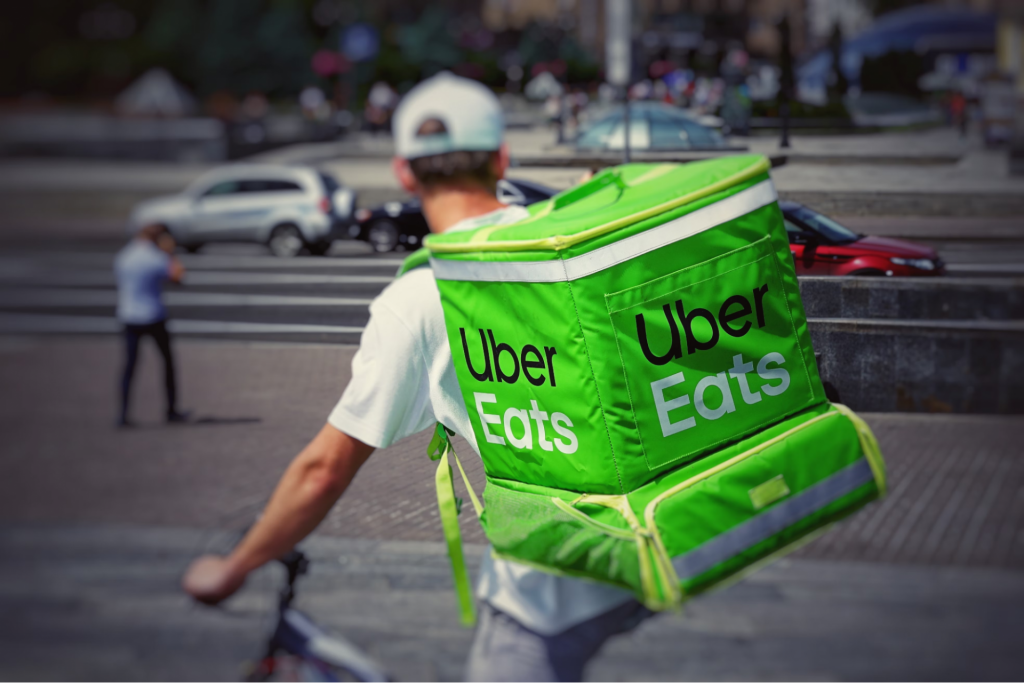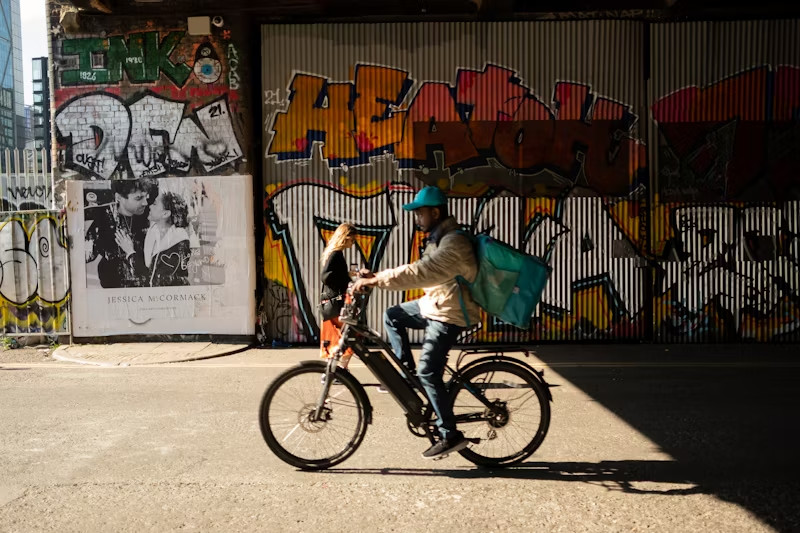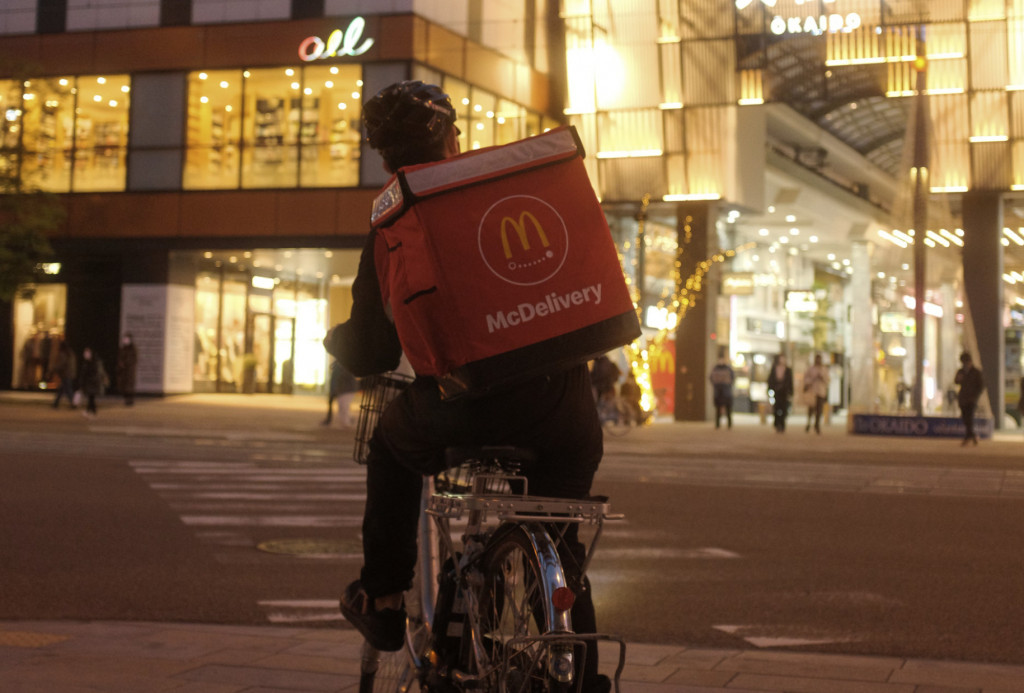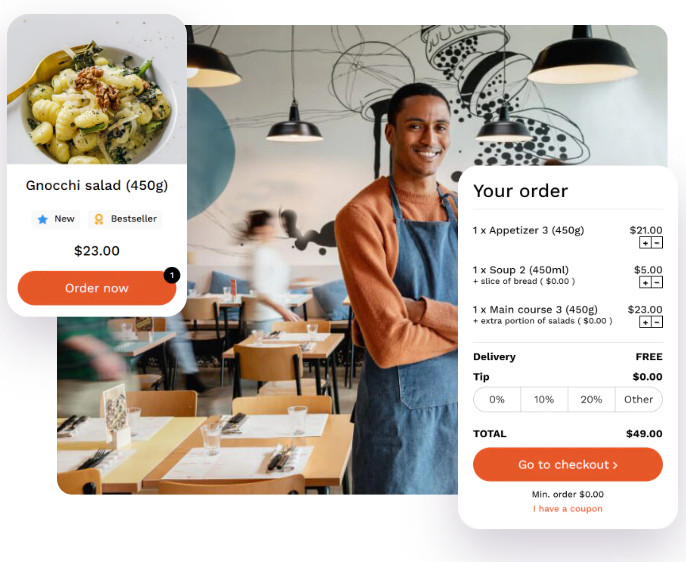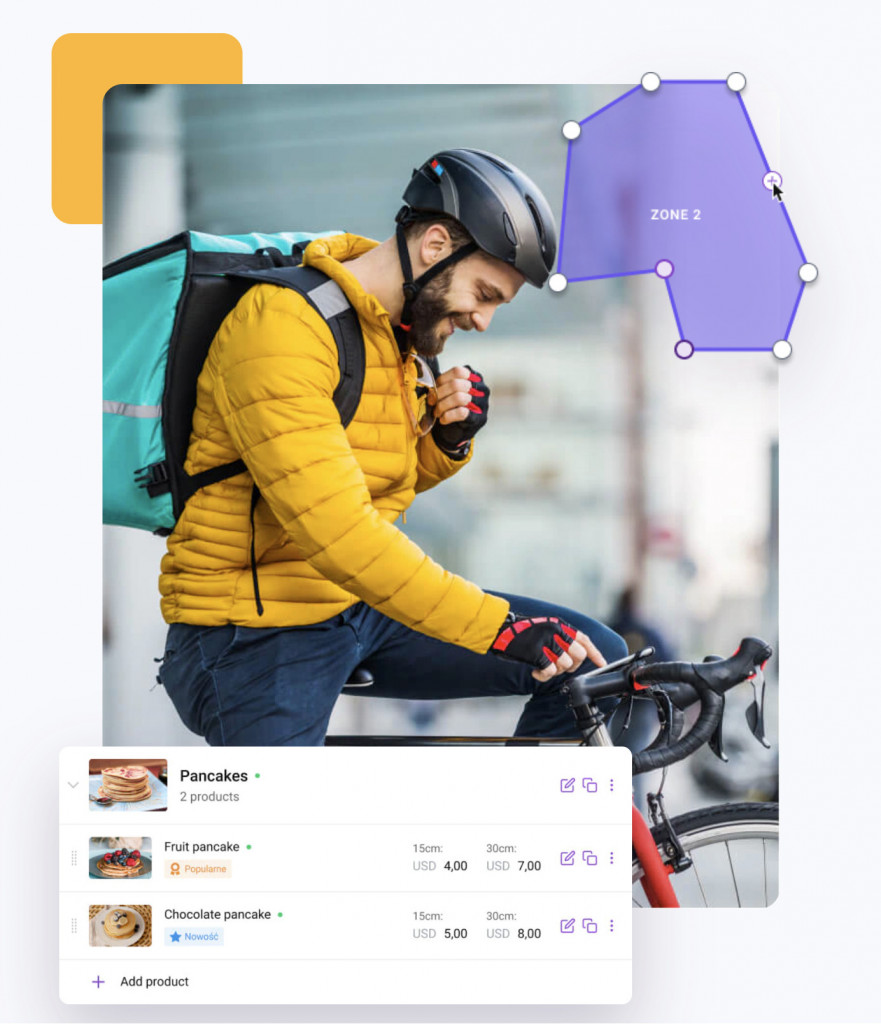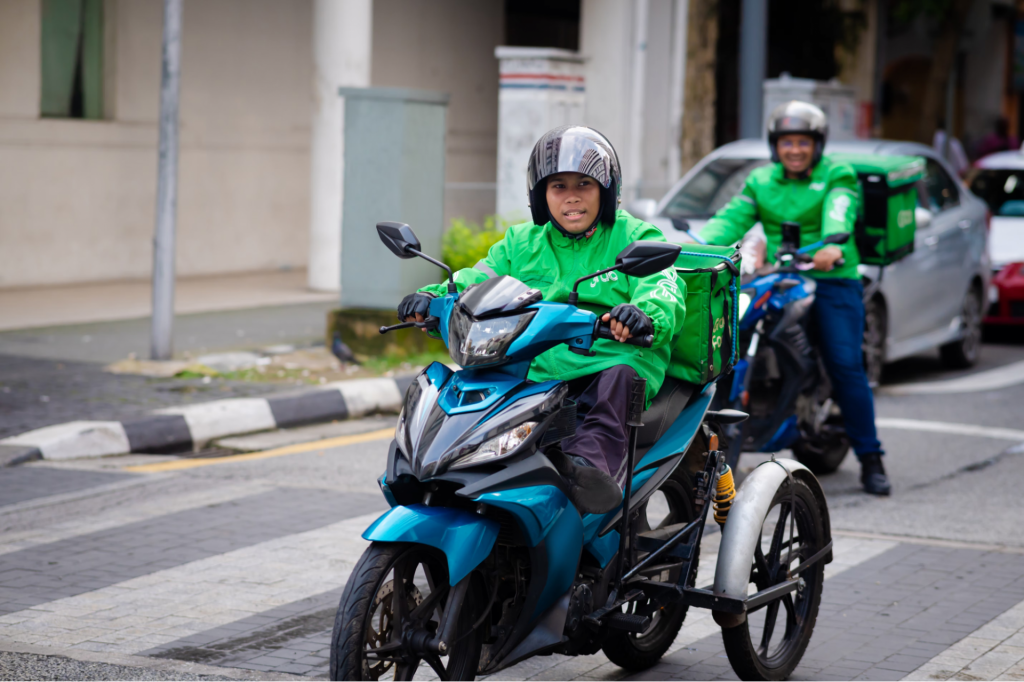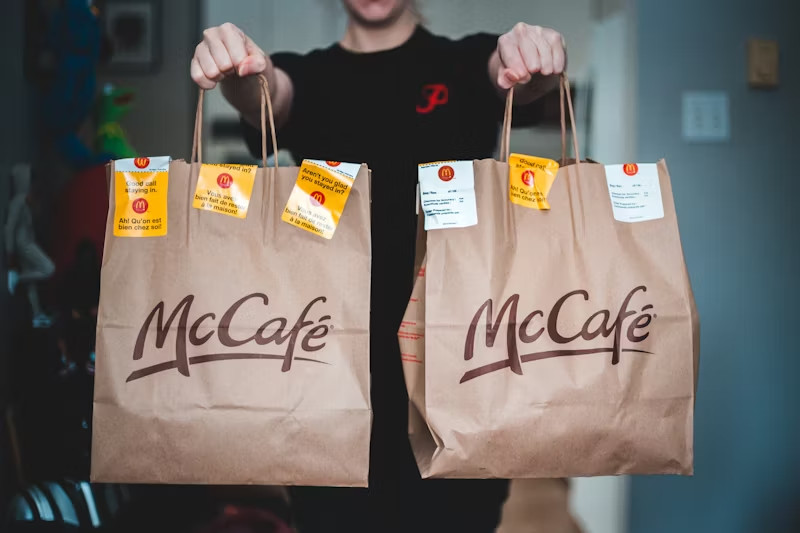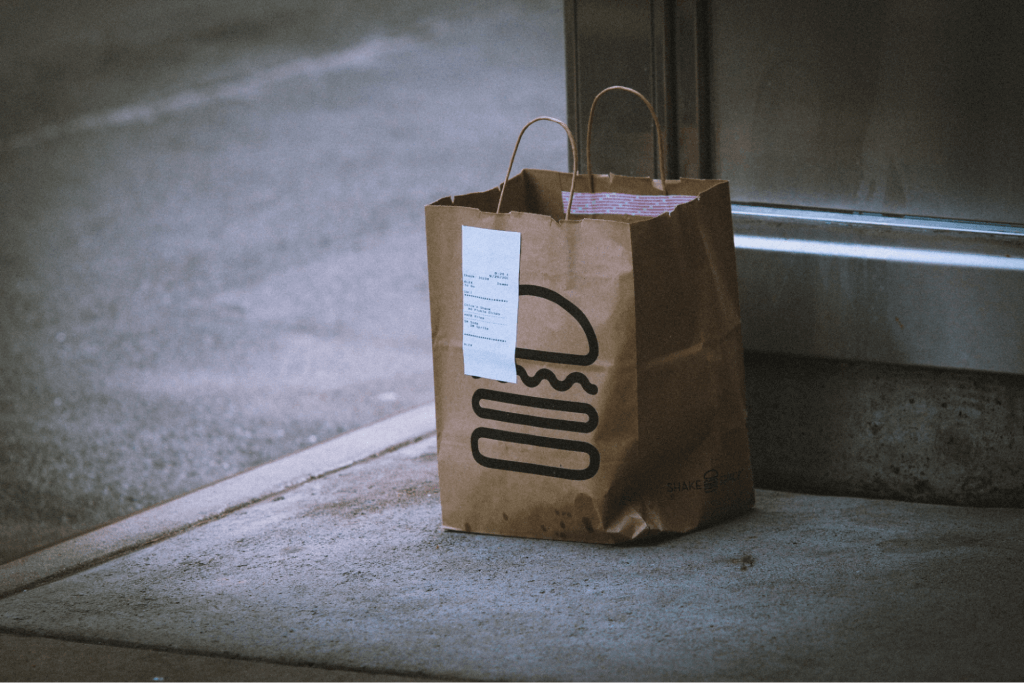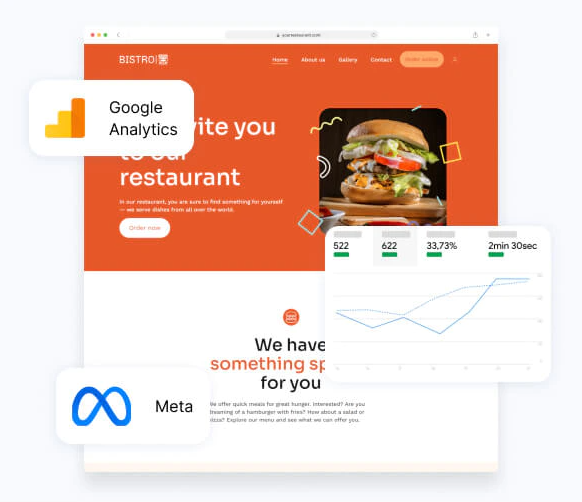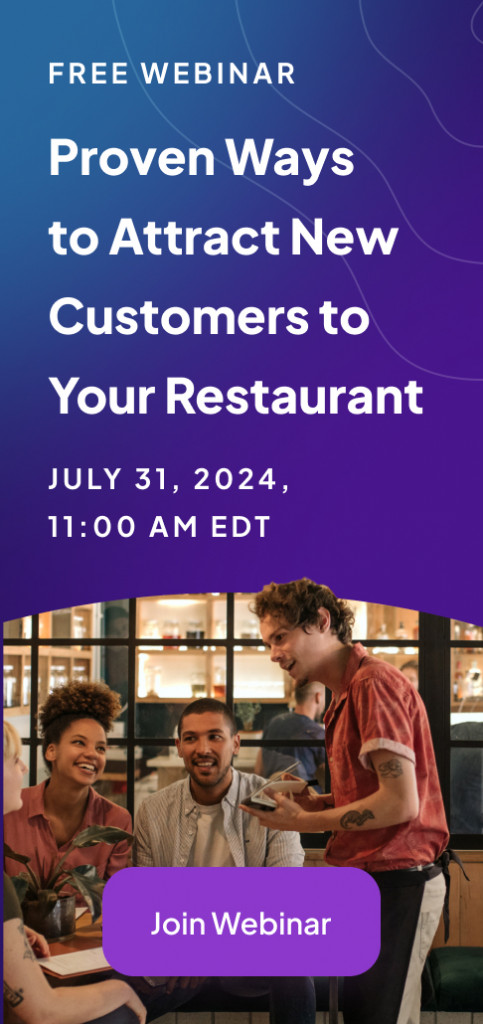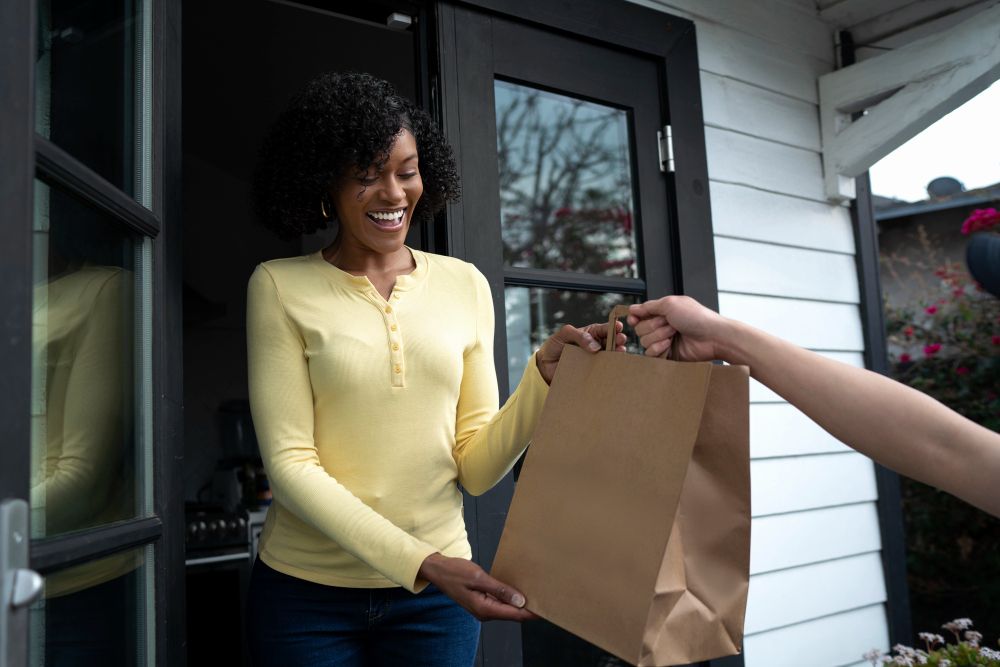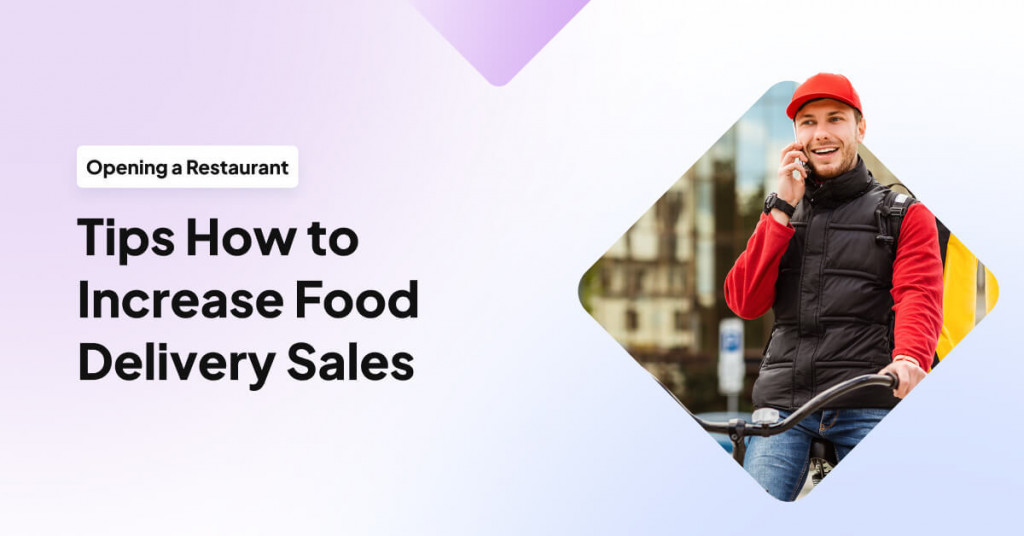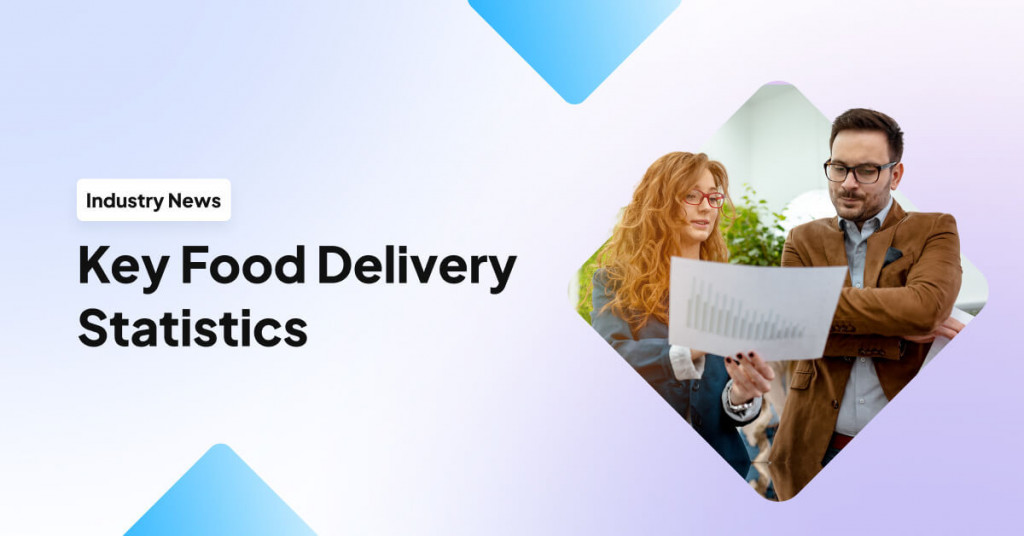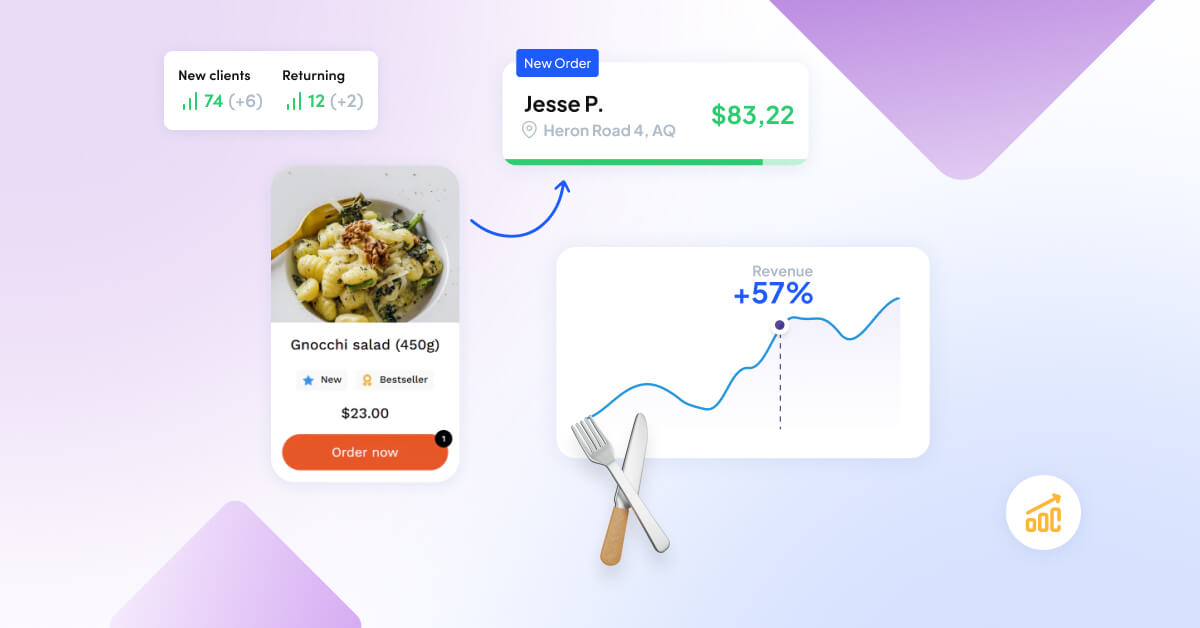Last-mile delivery is the process of transporting goods from a transportation hub to their final destination, typically the customer’s doorstep. It’s the last step in the delivery process and often the most challenging.
With the surge of competition in e-commerce and food delivery services, a perfect service is pretty much expected. This final leg is absolutely crucial for customer satisfaction.
In the restaurant industry, the high fees charged by third-party delivery services are a major issue. These fees can cut into profits and impact overall efficiency. Moreover, third-party delivery services can hardly be considered crème de la crème of food delivery.
In this article, we’re going to explore what the last mile delivery is, what it means in regard to restaurants, and what you can do to make it reliable.
What Is Last Mile Delivery?
Last-mile delivery is the final step in the shipping process, where goods are transported from a transportation hub to the end customer. For example, when you order a package from Amazon, it starts at a warehouse and moves to a local distribution center. Then, a delivery driver brings it to your doorstep, which is the last-mile part of the delivery.
In a restaurant, last-mile delivery involves getting your meal from the kitchen to your table. For example, after your customer places an order online, your restaurant will prepare the meal and package it. Then, a delivery driver picks up the order and brings it directly to the customer’s home.
This is the last and crucial part of the process because even if you manage to do everything on time, you’re still prone to failing your customer if the delivery driver fails to deliver the food on time. Delivering cold food is one sure way to sabotage your restaurant’s rating and discourage even the most loyal customers from ordering again.
Last Mile Delivery for Restaurants: Challenges and Solutions
Third-party delivery services like Uber Eats, DoorDash, and Grubhub are truly a double-edged sword. On the one hand, they can help you gain exposure and start delivering food without worrying about setting up a delivery fleet.
On the other hand, these delivery services charge high fees, often between 15% to 30% per order, which will eat into profit margins very quickly.
High Fees and Commissions
One of the most significant drawbacks of using third-party delivery services is undoubtedly the high fees and commissions they charge. These fees can take a substantial portion of the restaurant’s revenue.
For example, Uber Eats, DoorDash, and Grubhub typically charge between 15% and 30% per order. These costs can quickly add up, making it challenging for restaurants to maintain profitability, especially smaller establishments with tighter margins.
Quality Loss
Effective last-mile delivery is particularly important simply because it’s a zero-sum game. Your staff might do a great job of preparing and packaging food, yet all of this hard work will still go to waste if your food is not delivered on time and at the proper temperature.
Third-party last-mile delivery services are always a risk, as it is much more difficult to control their quality. This is the main reason why many restaurants switch to using in-house restaurant delivery software and building their own delivery fleet as soon as they can afford it.
Greater Control Over the Delivery Process
Running your own restaurant delivery service gives you way more control over the whole process. When you manage your own delivery staff, you can make sure orders are handled with care and arrive on time. Plus, you get to keep an eye on the quality and presentation of the food, which means your customers get a consistently great experience every time.
Enhanced Customer Experience and Satisfaction
Managing deliveries in-house allows restaurants to interact directly with their customers. This direct interaction can enhance the customer experience, as restaurants can address any issues immediately and gather valuable restaurant feedback. Personalized service helps build customer loyalty and increases satisfaction.
10 Ways to Improve Last Mile Delivery in a Restaurant
The last-mile delivery problem is not new. It’s been increasingly problematic across industries, especially ever since eCommerce peaked and faster delivery speeds became an absolute must. Below, you’ll find ten ways to both improve the last-mile delivery process and cut its costs.
Invest in Online Food Ordering Technology
Relying too heavily on third-party delivery services like Uber Eats and DoorDash can be costly due to their high fees and commissions. To gain more control over your delivery process and save money, consider investing in your own food ordering software.
This allows you to track orders in real-time, communicate directly with drivers and customers, and make quick adjustments when needed. By managing deliveries in-house, you can improve customer satisfaction and reduce reliance on third-party services, ultimately improving your bottom line.
Ultimately, if you choose using both, in-house deliveries, and third-party services, you should consider using order aggregation software to synchronize all platforms in one place. This will reduce mistakes, enable faster order fulfillment, and eliminate chaos in tablet juggling.
- Panera Bread: Shifted from third-party services to their own delivery system to cut costs and improve service quality.
- Domino’s: Built their own in-house delivery fleet and software, allowing complete control over the delivery experience.
- Chipotle: Developed their own delivery system, reducing dependence on third-party platforms and enhancing customer satisfaction
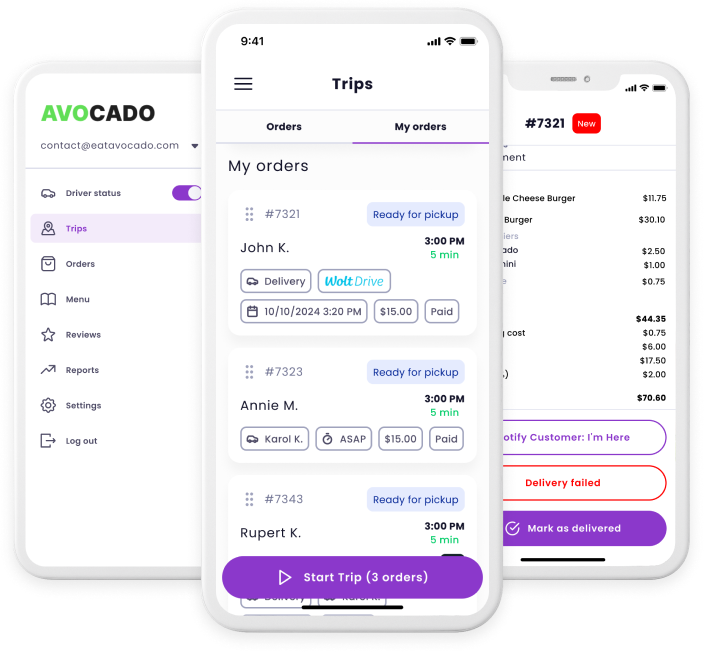
Use Hybrid Models
Combining third-party delivery services with an in-house restaurant delivery software offers flexibility and scalability. In-house delivery can ensure control over the customer experience and food quality, while dispatching delivery to third-party services can handle overflow orders or deliveries to distant locations.
This hybrid approach would allow you to expand their delivery reach without compromising service standards. By strategically using both models, you can manage high demand periods efficiently and maintain a high level of customer satisfaction.
- Chipotle: Uses its own delivery staff for nearby orders and partners with third-party services like DoorDash for further distances.
- Panera Bread: Employs a hybrid model, using in-house drivers and collaborating with third-party delivery platforms.
- Shake Shack: Implements both in-house delivery and partnerships with services like Uber Eats to maximize reach and efficiency.
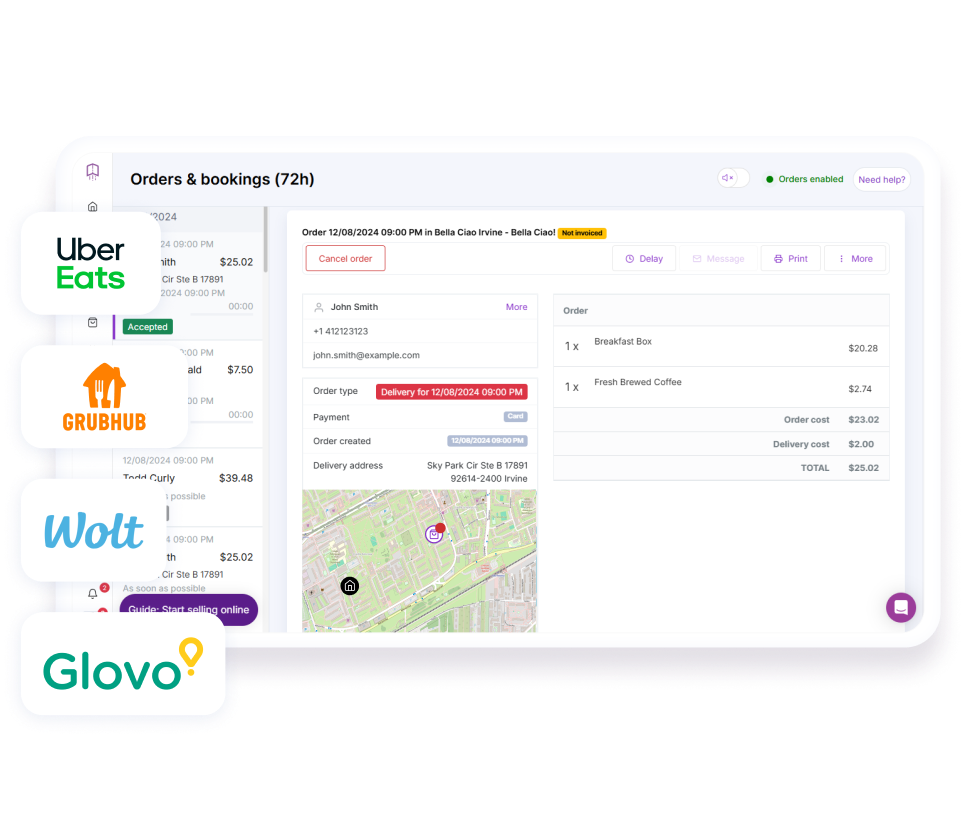
Using restaurant delivery software to plan the most efficient routes can significantly reduce delivery times and operational costs. These tools analyze traffic patterns, road conditions, and delivery locations to create the shortest and fastest routes for drivers.
Optimized routes not only save time but also reduce fuel consumption and vehicle wear and tear, contributing to overall cost savings.
- Domino’s: Utilizes its own GPS tracking system to find the fastest routes, reducing delivery times and fuel costs.
- Amazon: Uses advanced algorithms and machine learning to optimize delivery routes, ensuring packages are delivered efficiently.
- FedEx: Implements route optimization software to streamline their delivery operations, saving time and improving service reliability.
Train Your Own Delivery Fleet
Well-trained delivery staff are essential for efficiency and customer service. Training should cover safe driving practices, efficient route planning, and customer interaction skills. Drivers should also be trained to handle food carefully to maintain quality during transit.
Regular training sessions and performance reviews can help ensure that delivery staff remain efficient and courteous, contributing to a positive customer experience and repeat business.
- Papa John’s: Provides extensive training programs for their delivery drivers, focusing on safety, route optimization, and customer service.
- Zomato: Offers training sessions for delivery partners to ensure they handle food safely and provide excellent customer service.
- Instacart: Implements comprehensive training for their shoppers and delivery drivers to ensure accurate order fulfillment and positive customer interactions.
Invest in Quality Packaging
High-quality packaging is crucial for maintaining food quality and temperature during delivery. Insulated bags and containers keep food warm, while secure packaging prevents spills and leaks.
Good packaging also protects the food from external contaminants and ensures that it arrives in the same condition as it left the restaurant. Investing in sturdy, well-designed packaging can significantly enhance customer satisfaction and reduce complaints related to food quality.
- McDonald’s: Uses insulated packaging to keep food warm during transit, ensuring meals arrive in optimal condition.
- HelloFresh: Provides well-insulated boxes and cold packs to maintain the freshness of meal kits during delivery.
- Blue Apron: Uses innovative food packaging packaging that keeps ingredients fresh and maintains the quality of meals during delivery.
Adopt Drones and Autonomous Vehicles
Exploring emerging technologies like delivery drones and autonomous vehicles can revolutionize last-mile delivery. Drones can bypass traffic and deliver orders quickly to customers in densely populated urban areas.
Autonomous vehicles can operate continuously, reducing labor costs and increasing delivery capacity. These technologies are still in the early stages of adoption but show great promise for improving delivery speed, efficiency, and scalability in the near future.
- Domino’s: Trials autonomous delivery vehicles to bring pizzas to customers, reducing delivery times and labor costs.
- Amazon Prime Air: Tests delivery drones to provide faster delivery times in urban areas.
- Starship Technologies: Uses autonomous delivery robots to deliver food and packages in various cities.
Implement Curbside Pickups and Takeaway
With curbside pickup, customers can get their orders without leaving their cars, making it super convenient. Takeaway allows customers to quickly come in, pick up their food, and leave, which helps streamline the process and reduces pressure on your delivery drivers.
- Chipotle: Offers curbside pickup so customers can stay in their cars while getting their orders.
- Panera Bread: Uses a rapid pickup shelf for easy order collection.
Monitor Performance
Use restaurant analytics software to identify areas for improvement. Key performance indicators (restaurant KPIs) such as delivery times, customer satisfaction, and order accuracy should be monitored closely.
Reviewing these metrics will help you can pinpoint inefficiencies, address recurring issues, and implement strategies to improve your delivery operations.
- Grubhub: Uses data analytics to track delivery performance and identify bottlenecks.
- DoorDash: Analyzes delivery times and customer feedback to improve their service.
Key Takeaways
- Last-mile delivery is the final step in transporting goods from a hub to the customer, crucial for customer satisfaction.
- High fees from third-party services like Uber Eats cut into restaurant profits and efficiency.
- Many restaurants switch to in-house restaurant delivery software to control quality and reduce costs.
- Managing deliveries in-house enhances customer experience and loyalty.
- Examples: Panera Bread, Domino’s, and Chipotle have developed their own delivery systems.
- Investing in in-house technology and training, along with optimizing routes and packaging, can improve last-mile delivery efficiency.
Frequently Asked Questions (FAQ)
What is the last mile delivery theory?
The last mile delivery theory focuses on the final step of getting goods from a transportation hub to their final delivery destination. This stage is critical because it directly impacts customer satisfaction and shipping costs.
Efficiently solving the last mile delivery logistics can be challenging due to traffic, route optimization, and timely deliveries. Many businesses, especially those with high ecommerce sales, are moving towards in-house services to better control these factors and reduce reliance on third-party providers, ultimately lowering their shipping costs and improving service quality.
What is the most common problem for last-mile delivery?
A common last mile problem involves high costs and logistical challenges in delivering goods from distribution centers to the final destination. For instance, a major online retailer faced significant costs of last mile delivery due to inefficient routing and traffic delays in urban areas.
They struggled with meeting customer expectations for fast delivery, especially during peak seasons. To address this, they invested in advanced routing software and expanded their in-house delivery fleet, which helped reduce costs and improve delivery times.
What is an example of a last mile problem?
An example of a last mile problem is Amazon’s struggle to deliver packages quickly and cost-effectively in New York City. The city’s dense population, heavy traffic, and limited parking spaces made it difficult for Amazon to meet customer expectations for speedy delivery.
To tackle this, Amazon opened additional distribution centers closer to the city and invested in bike couriers and on-foot delivery personnel. This approach helped Amazon reduce delivery times and costs, improving customer satisfaction.
What is the biggest challenge with last mile deliveries?
The biggest challenge with last mile deliveries is balancing speed and cost efficiency. Customers increasingly expect same day delivery, which puts immense pressure on logistics.
This rapid delivery demand drives up costs, making it crucial to find cost-effective solutions.
The future of last mile delivery cost management involves innovative approaches like crowdsourced delivery, where independent drivers are used to fulfill orders.
However, managing and maintaining the reliability of these crowdsourced services adds another layer of complexity, highlighting the ongoing struggle to meet customer expectations affordably and efficiently.
What are the leading last-mile services?
As same-day delivery has become a norm, companies are refining their last-mile delivery strategy to meet these expectations.
Last mile logistics involve managing the complexities of delivering packages efficiently. Post and parcel companies, like FedEx and UPS, play a significant role in last mile deliveries, constantly innovating to provide swift and reliable final mile delivery services.

